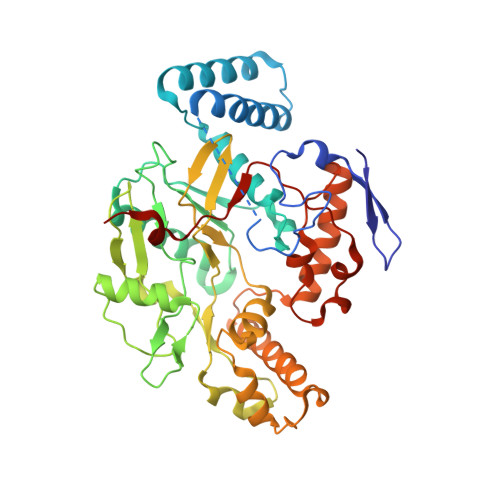Peripheral but crucial: a hydrophobic pocket (Tyr(706), Leu(337), and Met(336)) for potent and selective inhibition of neuronal nitric oxide synthase.
Xue, F., Li, H., Fang, J., Roman, L.J., Martasek, P., Poulos, T.L., Silverman, R.B.(2010) Bioorg Med Chem Lett 20: 6258-6261
- PubMed: 20833542
- DOI: https://doi.org/10.1016/j.bmcl.2010.08.096
- Primary Citation of Related Structures:
3NNY, 3NNZ - PubMed Abstract:
Selective inhibition of the neuronal isoform of nitric oxide synthase (nNOS) over endothelial nitric oxide synthase (eNOS) and inducible nitric oxide synthase (iNOS) has become a promising strategy for the discovery of new therapeutic agents for neurodegenerative diseases. However, because of the high sequence homology of different isozymes in the substrate binding pocket, developing inhibitors with both potency and excellent isoform selectivity remains a challenging problem. Herein, we report the evaluation of a recently discovered peripheral hydrophobic pocket (Tyr(706), Leu(337), and Met(336)) that opens up upon inhibitor binding and its potential in designing potent and selective nNOS inhibitors using three compounds, 2a, 2b, and 3. Crystal structure results show that inhibitors 2a and 3 adopted the same binding mode as lead compound 1. We also found that hydrophobic interactions between the 4-methyl group of the aminopyridine ring of these compounds with the side chain of Met(336), as well as the π-π stacking interaction between the pyridinyl motif and the side chain of Tyr(706) are important for the high potency and selectivity of these nNOS inhibitors.
Organizational Affiliation:
Departments of Chemistry and Biochemistry, Molecular Biology, and Cell Biology, Center for Molecular Innovation and Drug Discovery, and Chemistry of Life Processes Institute, Northwestern University, 2145 Sheridan Road, Evanston, IL 60208-3113, USA.



















